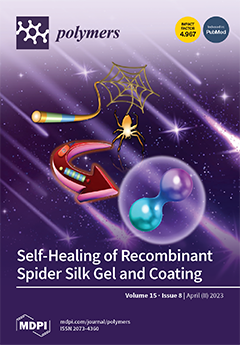Polymeric micelles are promising carriers for the delivery of poorly water-soluble drugs, providing enhanced drug solubility, blood circulation times, and bioavailability. Nevertheless, the storage and long-term stability of micelles in solution present challenges requiring the lyophilization and storage of formulations in the solid
[...] Read more.
Polymeric micelles are promising carriers for the delivery of poorly water-soluble drugs, providing enhanced drug solubility, blood circulation times, and bioavailability. Nevertheless, the storage and long-term stability of micelles in solution present challenges requiring the lyophilization and storage of formulations in the solid state, with reconstitution immediately prior to application. Therefore, it is important to understand the effects of lyophilization/reconstitution on micelles, particularly their drug-loaded counterparts. Herein, we investigated the use of β-cyclodextrin (β-CD) as a cryoprotectant for the lyophilization/reconstitution of a library of poly(ethylene glycol-
b-ε-caprolactone) (PEG-
b-PCL) copolymer micelles and their drug-loaded counterparts, as well as the effect of the physiochemical properties of different drugs (phloretin and gossypol). The critical aggregation concentration (CAC) of the copolymers decreased with increasing weight fraction of the PCL block (
fPCL), plateauing at ~1 mg/L when the
fPCL was >0.45. The blank (empty) and drug-loaded micelles were lyophilized/reconstituted in the absence and presence of β-CD (9%
w/
w) and analyzed via dynamic light scattering (DLS) and synchrotron small-angle X-ray scattering (SAXS) to assess for changes in aggregate size (hydrodynamic diameter,
Dh) and morphology, respectively. Regardless of the PEG-
b-PCL copolymer or the use of β-CD, the blank micelles displayed poor redispersibility (<10% relative to the initial concentration), while the fraction that redispersed displayed similar
Dh to the as-prepared micelles, increasing in
Dh as the
fPCL of the PEG-
b-PCL copolymer increased. While most blank micelles displayed discrete morphologies, the addition of β-CD or lyophilization/reconstitution generally resulted in the formation of poorly defined aggregates. Similar results were also obtained for drug-loaded micelles, with the exception of several that retained their primary morphology following lyophilization/reconstitution, although no obvious trends were noted between the microstructure of the copolymers or the physicochemical properties of the drugs and their successful redispersion.
Full article






